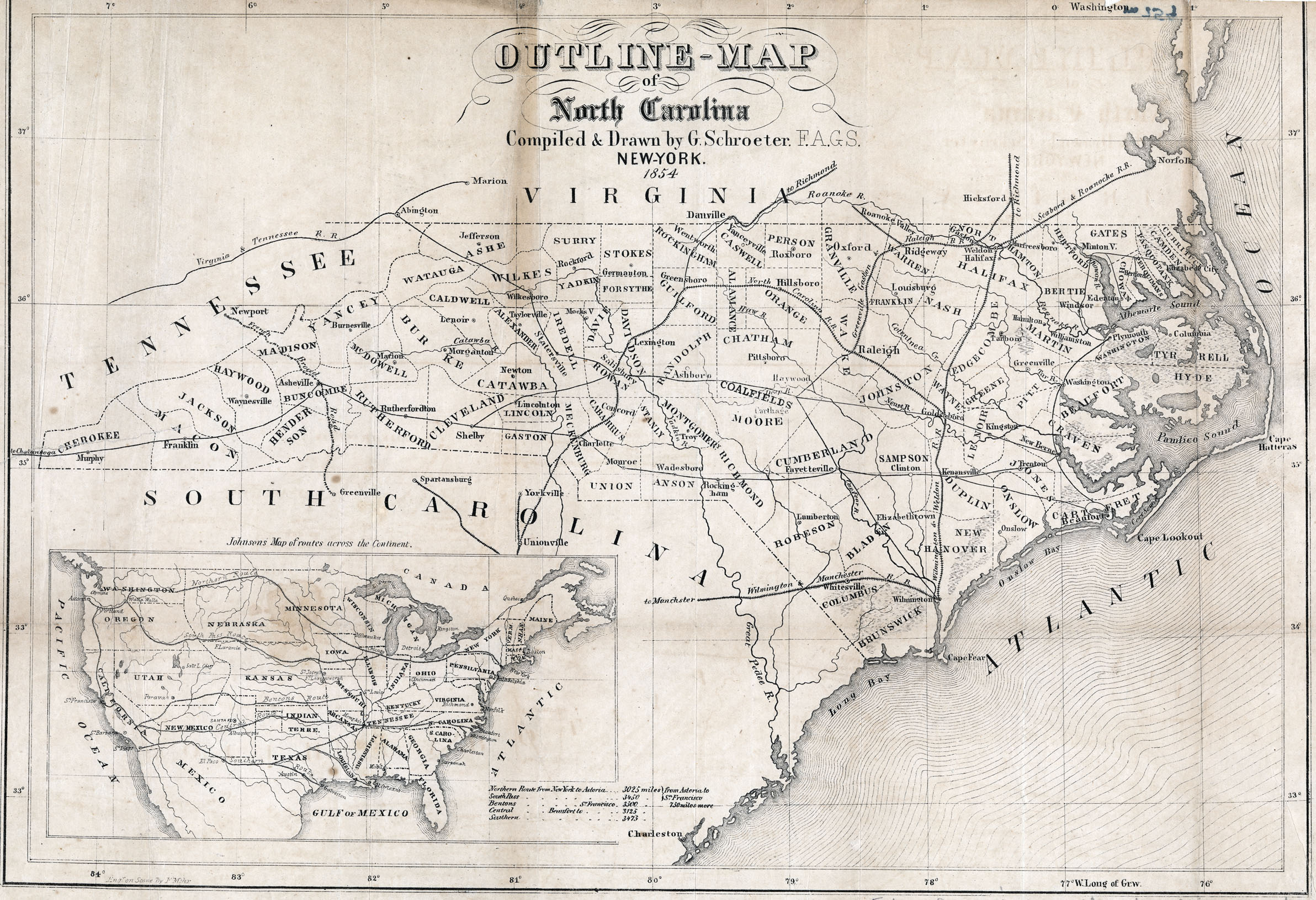The numbers in the table below tell us how much money the North Carolina Railroad was expected to cost when it was built in the 1850s. But the value of money changes over time. So how much money was that in "today's dollars"? What would it have bought at the time?
There are no simple, clear answers to those questions. But there are a few ways we can get estimates.
For example, Paul Cameron paid 50 cents a bushel for corn in 1844. So the total cost of the North Carolina Railroad, $3,405,133.21, could have bought 6.8 million bushels of corn.
But how much food is that, really? According to one estimate, if corn were to be the main part of your diet -- as it was for most antebellum southerners -- you'd need about 10 bushels a year. So the cost of building the railroad would have bought corn for 680,000 people for a year, or 78 percent of the state's population of 869,039.
Another way of looking at these costs is to compare them to household income or wealth. According to one study, the average household wealth -- everything a family owned -- in North Carolina's Appalachian region in 1860 was about $2500. So this railroad cost the equivalent of everything that about 1,350 families in region owned.
How does that compare to today? The Bureau of Labor statistics estimates that the cost of living in 1850 was about one-tenth of what it is today. So we could estimate that a railroad that cost $3 million in the 1850s would cost $30 million today.
But that isn't right, because high-speed rail is estimated to cost anywhere from $2 million to more than $20 million per mile, so the 223 miles of the North Carolina Railroad would cost between $446 million and $4.46 billion today. And per capita (per person) income in the U.S. today is nearly $40,000, so that would be the annual income of between 11,000 and 110,000 people. We looked at household wealth for 1860 and income per person for today, but still, railroads seem to cost a lot more today than they did in the 1850s.
We could do more research and get better data for comparison, but we'd still have to do a lot of estimation, and we'd still have room for argument. So where does that leave us? All we know for certain is that $3 million was a lot of money in 1851, which is why there was so much opposition to railroads for so long. Railroads are still expensive today, and there's still a lot of opposition to investing in them. Whether the return on that investment was worth it was something North Carolinians debated in the 1850s, and we're debating it again today.
The data
From Proceedings of the General Meeting of Stockholders of the North Carolina Rail Road Company, at Greensboro', July 10, 1851, with the By-Laws of the Company, as Revised at Said Meeting, republished by Documenting the American South.
Estimated cost of building the North Carolina Rail Road. Two hundred and twenty-three miles long.
|
Materials |
1st Division. |
2nd Division |
3rd Division |
4th Division. |
Grand Total. |
|---|---|---|---|---|---|
|
Graduation including Drains, |
$172,679 16 |
$232,325 73 |
$281,869 32 |
$277,391 96 |
$964,266 17 |
|
Bridging and Arch Culverts, |
36,542 25 |
64,293 25 |
77,969 50 |
161,764 50 |
340,569 50 |
|
Cattle Guards, |
2,850 00 |
3,000 00 |
3,750 00 |
3,225 00 |
12,825 00 |
|
Depots and Water Stations, |
8,000 00 |
5,000 00 |
5,150 00 |
8,500 00 |
26,650 00 |
|
Road Crossings & Changes of Road. |
2,000 00 |
2,500 00 |
1,850 00 |
8,042 50 |
14,392 50 |
|
Track including Turnouts, |
362,112 00 |
394,240 00 |
323,584 00 |
406,400 00 |
1,486,336 00 |
|
Engineering and Superintendence, |
33,318 00 |
42,112 00 |
34,202 00 |
41,918 80 |
151,550 80 |
|
Contingencies, |
23,207 14 |
31,211 02 |
36,432 68 |
46,892 40 |
137,743 24 |
|
Land Damages. |
10,000 00 |
5,000 00 |
6,000 00 |
10,000 00 |
31,000 00 |
|
[subtotals] |
$650,708 55 |
$779,682 00 |
$770,807 50 |
$964,135 16 |
$3,165,333 21 |
|
General Shops for Repairs, &c., |
100,000 00 |
||||
|
Equipment of Road, Locomotives, &c. |
139,800 00 |
||||
|
Total cost. |
$3,405,133 21 |
